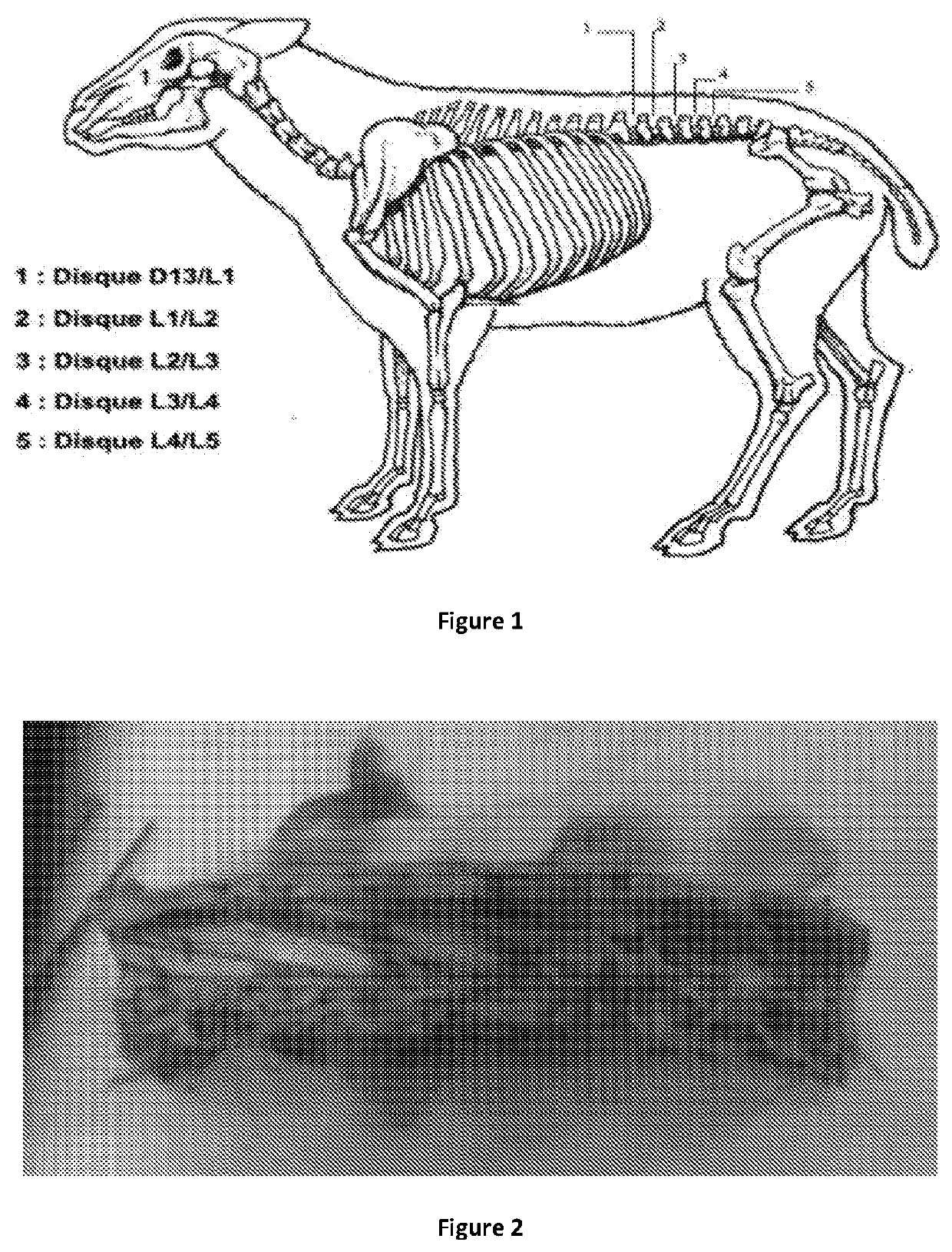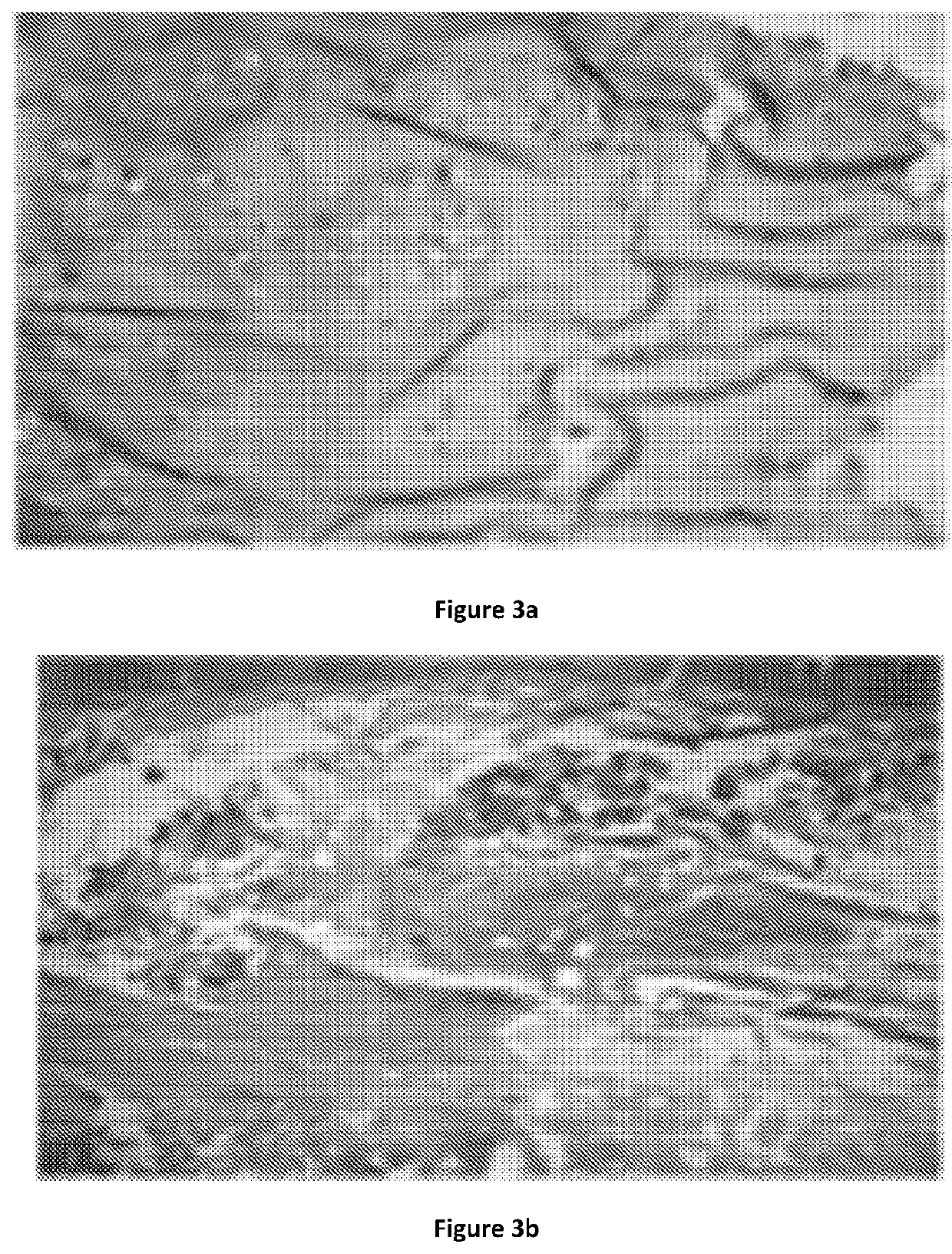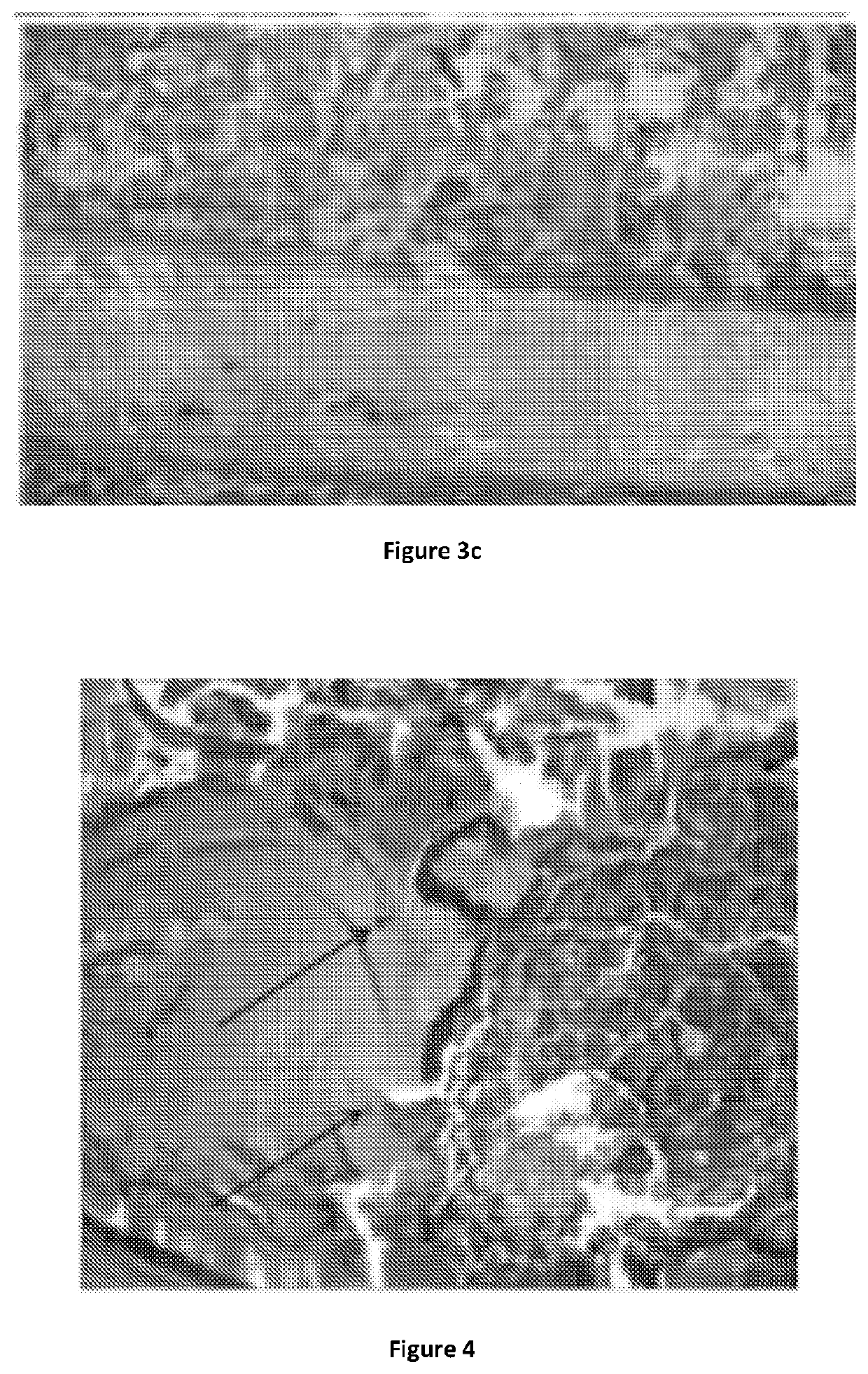Method of treating lower back pain
a lower back and back pain technology, applied in the field of lower back pain treatment, can solve the problems of disc loss, chronic pain, physical debilitating pain, etc., and achieve the effect of facilitating the free-radical coupling of vinyl moieties and little or no toxicity
- Summary
- Abstract
- Description
- Claims
- Application Information
AI Technical Summary
Benefits of technology
Problems solved by technology
Method used
Image
Examples
specific embodiments
[0800]The activatable composition suitably comprises: an active precursor component. The active precursor component is suitably: 10-20 wt % active precursor component. The active precursor component is suitably: crosslinkable microgel particles. The active precursor component is suitably: crosslinkable microgel particles with 2-8 mol. % of all monomers thereof functionalised with a crosslinkable moiety, such as a moiety comprise a terminal alkene. The active precursor component is suitably: crosslinkable microgel particles having an average particle size between 30 and 90 nm. The active precursor component is suitably: 10-20 wt % crosslinkable microgel particles. The active precursor component is suitably: crosslinkable microgel particles comprising poly(MMA / MAA / EGDMA) cores surface-functionalised with GMA, wherein the cores comprise comprises about 60-70% MMA, about 30-40% MAA and 0.1 to 1% EGDMA based on the total monomer mass. The active precursor component is suitably: 10-20 wt ...
examples
[0859]The present invention is described in more details by reference to the following non-limiting yet-illustrative examples.
Materials and Equipment
[0860]Methyl methacrylate (MMA, 99%), methacrylic acid (MAA, 99%), ethyleneglycol dimethacrylate (EGDMA, 98%), ammonium persulfate (APS, 98%), Sodium dodecyl sulfate (SDS, 98.5%), potassium phosphate dibasic (K2HPO4, 99%) and glycidyl methacrylate (GMA, 97%) were purchased from Sigma Aldrich and used as received. L-ascorbic acid (AS, 99%) was purchased from scientific lab supplies and used as received. Chloroform and Sodium hydroxide (NaOH, 98%) were purchased from Fisher Scientific and used as received.
[0861]Particular embodiments of treatment compositions and post-treatment compositions applicable in the context of the present invention, and pertinent components thereof (e.g. microgels), are described in patent publication number WO2011 / 101684 (University of Manchester), for instance Methods 1 and 1A (paragraphs [00184-185]), Methods ...
example a
on of Basic Internally-Crosslinked Microgel (Singly-Crosslinked Microgel, SXM)
[0862]A poly (MMA-MAA-EGDM) microgel is synthesised according to a modification of a literature procedure,13 and is also similar to that described in Method 1A, paragraph [00185], of the aforementioned patent document WO2011 / 101684, although in this example the proportions of MMA / MAA / EGDM are respectively 66.8 wt % / 32.8 wt % / 0.4 wt %—this equates to an approximate mol. % ratio of 320:185:1, or 63.2:36.6:0.2. The SXM-poly (MMA-MAA-EGDM) microgel is manufactured using a seed-feed emulsion polymerisation method. This is conducted in an aqueous environment under nitrogen, using sodium dodecyl sulfate (SDS) as the supporting surfactant, and ammonium persulfate APS as the thermo initiator at 85° C. The reaction duration is ˜8 hours with the particle size and polydispersity measured throughout the reaction to monitor the quality of the material. The reaction is halted in ice, and filtered through a 53 micron filt...
PUM
| Property | Measurement | Unit |
|---|---|---|
| size | aaaaa | aaaaa |
| wt % | aaaaa | aaaaa |
| pKa | aaaaa | aaaaa |
Abstract
Description
Claims
Application Information
 Login to View More
Login to View More - R&D
- Intellectual Property
- Life Sciences
- Materials
- Tech Scout
- Unparalleled Data Quality
- Higher Quality Content
- 60% Fewer Hallucinations
Browse by: Latest US Patents, China's latest patents, Technical Efficacy Thesaurus, Application Domain, Technology Topic, Popular Technical Reports.
© 2025 PatSnap. All rights reserved.Legal|Privacy policy|Modern Slavery Act Transparency Statement|Sitemap|About US| Contact US: help@patsnap.com



